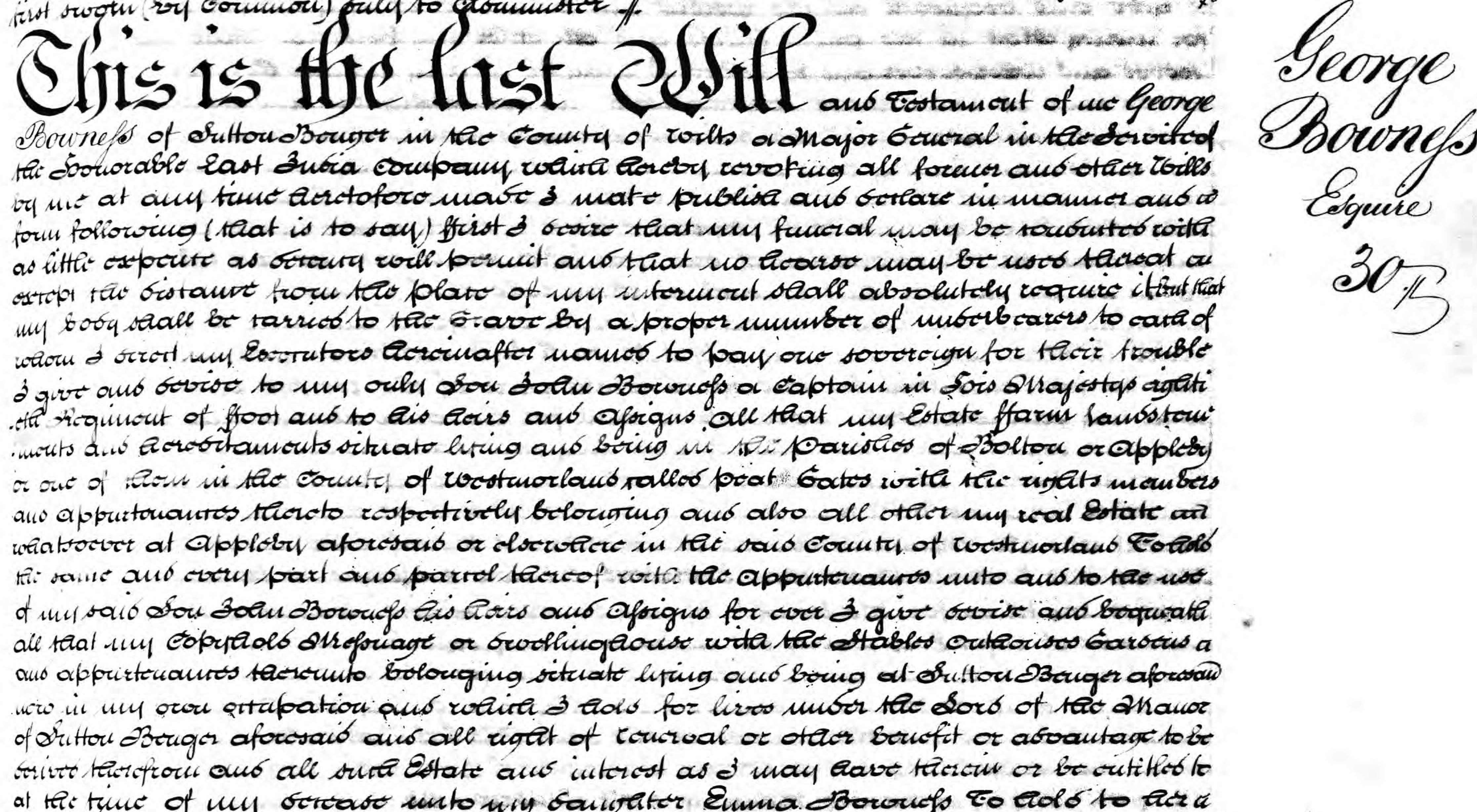Who do you think they were?
Page last updated: 21 March 2024, 11:19am… and why were they living in the village?
One tends to think of Sutton Benger in the 1700s and 1800s as being some sort of backwater, with little contact with the 'outside world'. When looking through the archives, the same names appear regularly over the years, with family names such as Messiter, Ferris, Fry and Russ. So when an unusual name appears, it makes you wonder who they were, and why they were here.
For example, a General Bowness lived in the village in the early 1800s. He was originally from Cumbria, had gone to India in 1784 as a young army officer, and only returned to England 33 years later. He retired to Sutton Benger as a Major General in about 1820, and lived at Park View until he died in 1833. Why did he choose to retire to Sutton Benger? – we may never know.

An unusual name which appears in the records is Jasper Gale Middleton – he had about 50 acres of land and a ‘dwelling house’ in the village in the late 1700s. He was a ‘boddice maker’ in London, with both his sons as apprentices. He was quite wealthy, and was a ‘Citizen and Merchant Taylor of London’. A faded bronze plaque in the church tells the story of his mother, Katherine / Catherine Gale.
Underneath the three uppermost seats next [to] the chancel lies the body of Cath. Wells, late wife of Joseph Wells of [the] Devizes. She was the daughter of Jasper Gale & Mary his wife, late of Sutton. She was first married to John Middleton, citizen of London, by whom she left issue: two sons, Jasper Gale Middleton & Loyde Middleton.
She departed this life the 10th of October 1745.
See also the 1744 Leases and the 1808 Survey; Joseph Gale Middleton was probably the tenant with the largest landholding in Sutton Benger in 1744. His land was spread across the parish, and did not conform to any of the farms that we recognise today; his homestead may have been at 'Little Manor' (3 Chestnut Road).
Finally, there is Peter Kinton; according to a document from the 1800s, there used to be a Memorial in All Saints' Church on the south wall of the chancel, dedicated to the memory of 'Peter Kinton, a merchant of Bristol', who had died in 1733 aged 82. So who was Peter Kinton, of Bristol? What sort of merchant was he, and why was he in Sutton Benger at the age of 82? And why was he important enough to warrant a church Memorial? The only other possible reference is in the Burial Register, where there is a 'Peter Keynton, widdower'. I have found nothing else about him. Oh well, another of life's little mysteries …
For more details on the church and the memorials, see Kay Taylor: Sutton Benger from Saxon Times to the Dawn of the 21st Century; (ELSP, 2000).
Archives and Facts
Discover more articles in the history index.
History Index